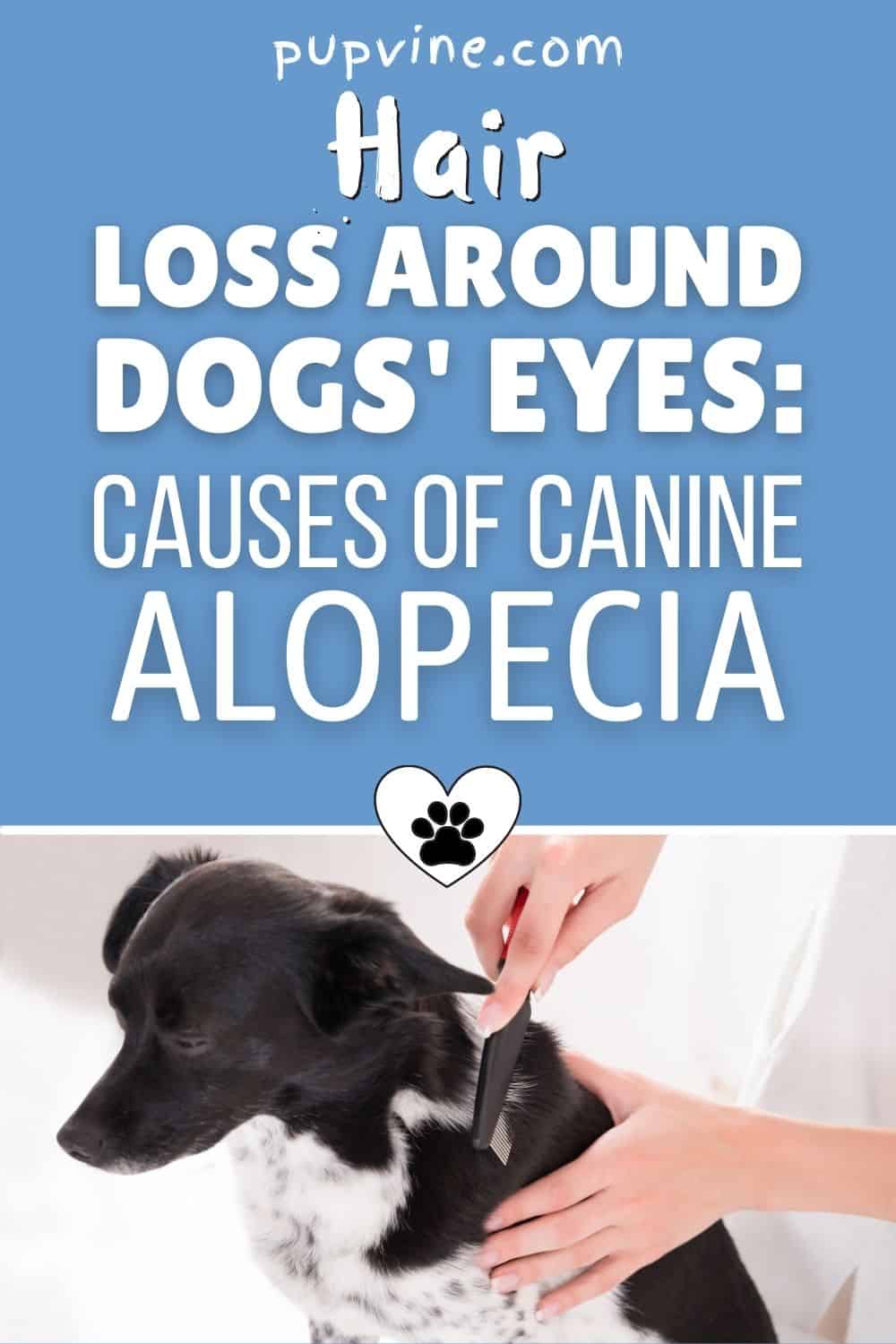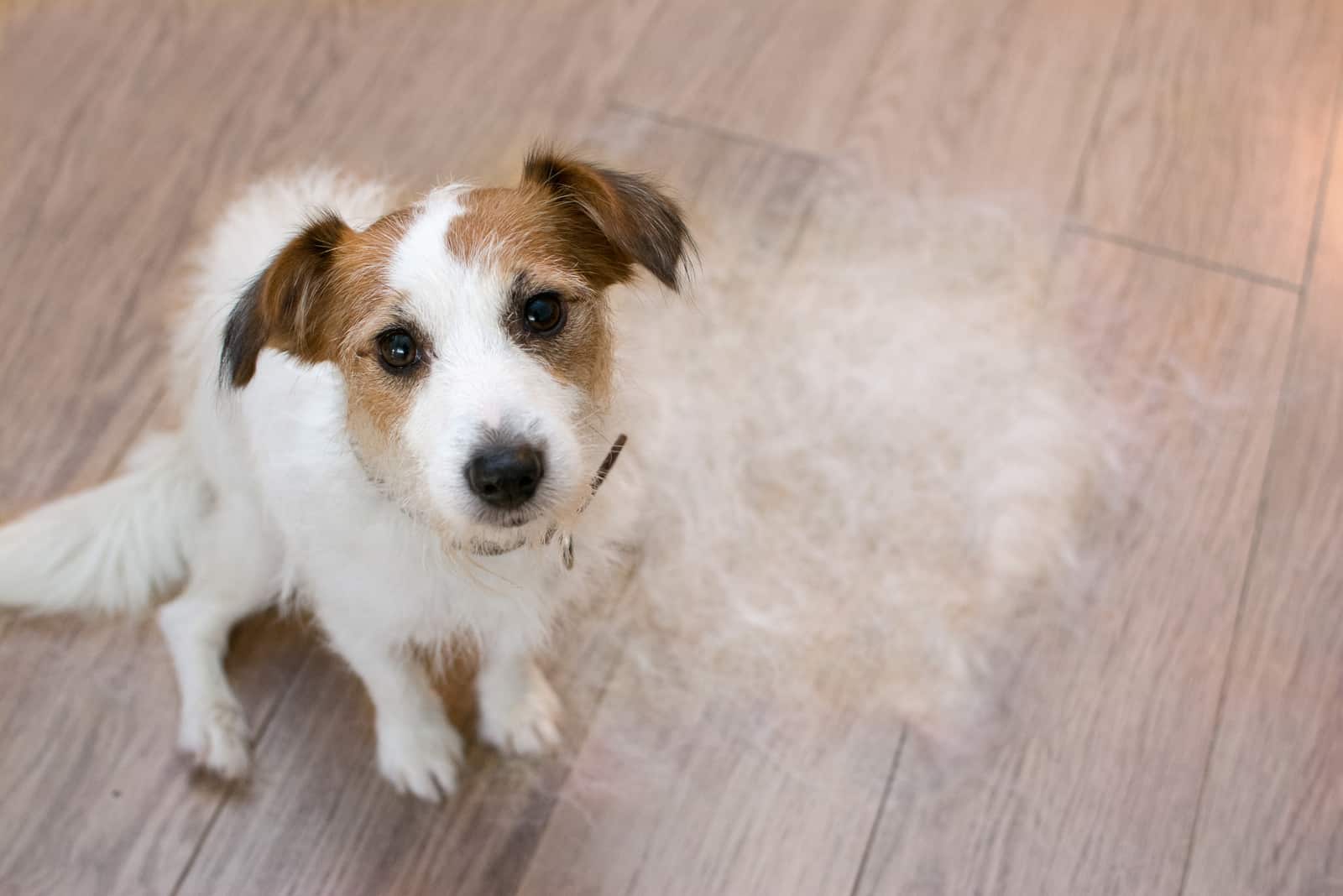There’s something about welcoming a pet of any kind into your home and family, but dogs hold a pretty special place in the hearts of humans worldwide. They are by far the most popular pet globally, and we treasure them.
When we notice that our precious fur-babies are feeling unwell, perhaps shunning their food or lying around with no energy, it’s only natural to worry about them.
One common problem in dogs is bald spots, where patches of hair begin to drop out. Countless dog owners have taken to the internet to ask, ‘why is my dog losing hair?’, worried that this might be a sign of a serious condition.
Some breeds are more likely to suffer from hair loss than others, and while most dogs shed their coat at some point, none should do so to the point of having exposed patches of skin.
If your dog is suffering from this, specifically if they are losing hair from around the eyes, then read on to discover the underlying causes of hair loss and possible treatments for these conditions.
What Causes Dogs To Lose Hair?
Alopecia, the medical name for hair loss, falls into two broad categories: congenital and acquired. With congenital alopecia, the dog will have been born with the condition (which may or may not be hereditary). In contrast, if it is acquired, they will have developed the condition due to the hair follicles being damaged or destroyed.
Any bald spots should be investigated to determine the cause, which will allow you to get the correct treatment. But what are the main causes?
Let’s start with the most common causes and work our way through them.
Allergies
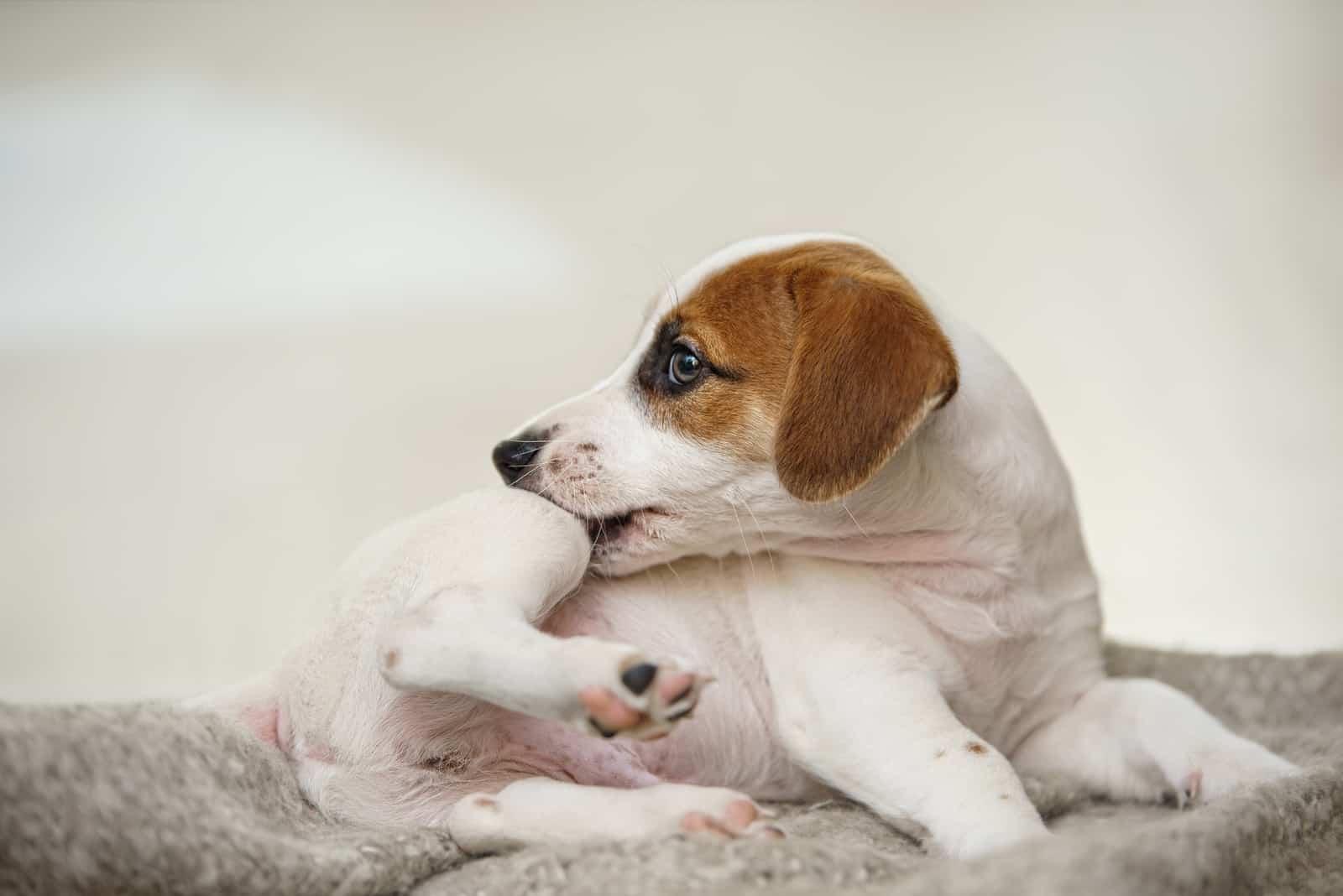
A lot of our doggie friends suffer from allergies of many types! These are usually connected with either food or environmental causes.
Food allergies include wheat, fish, chicken, soy, lamb, rabbit, pork, egg, and dairy.
Environmental triggers could be fleas (and other parasites), pollen, mold, and dust mites.
While the list of environmental causes probably isn’t a surprise, the food allergies could come as a shock to some people. After all, dogs are omnivores, aren’t they?
The trouble all lies in the proteins. When certain proteins enter the dog’s digestive system, especially for the first time, their immune system can overreact and produce antigens to fight them as they are seen as a threat.
Very often, once they have had this reaction, the dog will remain allergic to the meat. This is why it is vital to introduce new foods to dogs gradually and in small amounts.
Out of the list of common food allergies, wheat is probably the least problematic. On the other hand, Dairy is more complicated as any symptoms you notice could be down to lactose intolerance rather than an allergic reaction. Some of the symptoms are similar, though a dairy intolerance will affect digestion, whereas an allergy will cause hair loss and skin irritation.
Allergies are often not directly responsible for hair loss, but they can cause skin problems, such as dermatitis. The skin becomes red, itchy, and scaly, and the dog will scratch or bite at it. And because the hair follicles are already damaged, the hair is pulled out easily.
With insect, mite, or flea bites, there is the added problem of the bite itself, as the dog’s body immediately reacts by producing histamine, which causes the area around the bite to swell.
To add to the problem, dogs will often continue to scratch at the spot, which invites skin infections as bacteria can enter the lesions.
Just like humans, dogs also have a mucus membrane. When pollen or spores from mold come into contact with this, it can cause a bad reaction. Your dog’s eyes may be sore and red, and they will scrape at them or rub them on rough surfaces, which could be one reason why they have lost hair around the eyes.
Most allergies can be treated with antihistamines, such as Benadryl. These will ease the symptoms, but the best course of action is to try to avoid exposing your dog to the source of the allergy in the first place.
For example, to stop flea-bite allergies, kill the fleas as soon as possible! And if your dog is allergic (or intolerant) to certain foods, try to discover which ones are causing the problem and change your dog’s diet.
Parasites, Bacterial, And Fungal Infection
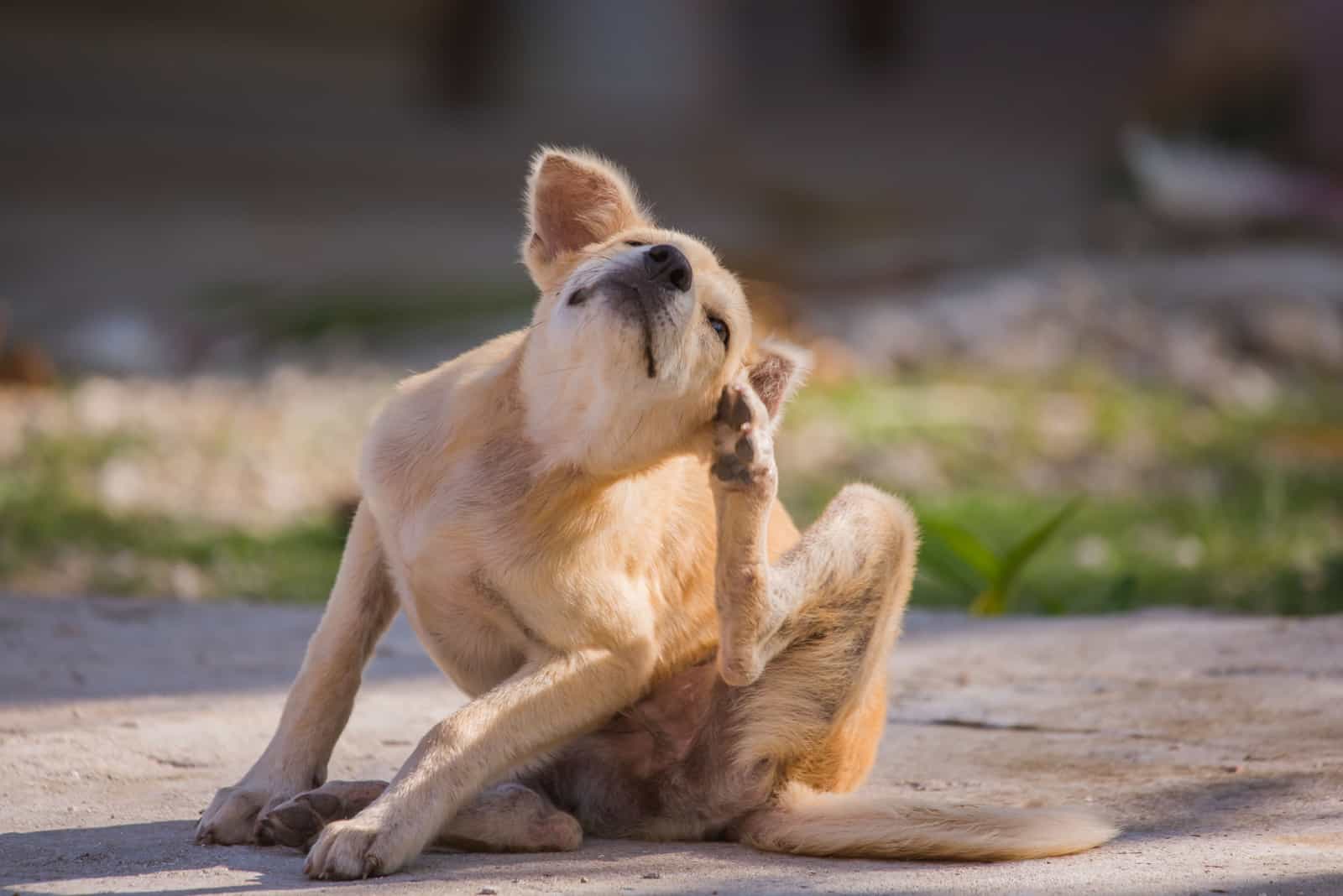
Partly covered by the section above, but worth breaking down further, infection due to parasites or fungus are common causes of bald spots and alopecia in dogs.
Flea infestation — it’s one of those things that dog owners dread! The first sign is often black spots on your dog’s coat, which are specks ‘flea dirt’ (mostly excreted blood). Run a flea comb through their fur, and you might find some fleas. They’ll be dark brown, around 1 or 2 mm long.
They’re a real nuisance and can be picked up so easily on those treks through the great outdoors, but they can be managed with the right treatment of sprays and powders.
But did you know there are colonies of mites already living on your dog? If you didn’t, don’t panic! These mites, known as Demodex canis, are present on every healthy dog and don’t usually cause any harm. However, the trouble arises when the colonies become too large and out of control, causing a powerful immune reaction.
This infection is known as either demodectic mange, Demodex mange, or demodicosis. It usually starts around the eyes before making its way to the mouth and then onto the rest of the body. While it isn’t itchy, it does cause the skin to become flaky and scaly, with hair loss around the eyes.
Most cases in puppies will resolve themselves as their immune systems become stronger, but older dogs with autoimmune disorders or other underlying health issues might suffer from this condition.
Secondary bacterial infections are common but can be treated with antibiotics, while the condition itself can be controlled with insecticide ointment.
Ringworm is also a fungal infection that can cause hair loss. Despite the name, it is not a worm! The rash often appears in a circular pattern, which is how the infection got its name.
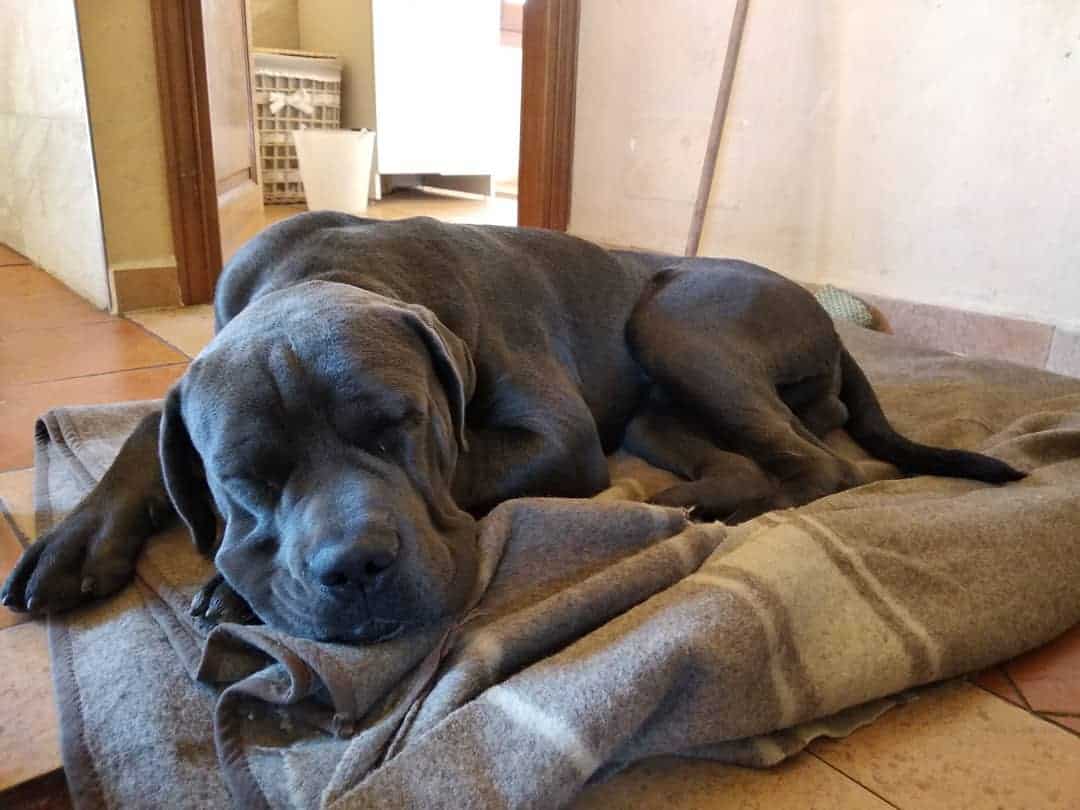
Photo from:@i_molossi_del_cimone
It’s fairly easy to identify because of this and can be treated with an antifungal ointment.
If you are concerned about your dog’s hair loss, be sure to seek veterinary advice. Using a range of tests, they will be able to determine the cause of the problem and suggest a course of treatment. Here are a few of the tests they may use:
• Skin scraping — In this test (which can be time-consuming but isn’t usually painful), a blunt blade is used to scrape the skin in the affected area. Liquid paraffin is used as a lubricant and also helps to collect any mites present. Sometimes the scrape has to go deep enough to cause slight bleeding of the capillaries, which helps catch any burrowing mites.
• Trichoscopy (hair plucks) — Usually used when testing for demodicosis, this is a quick and easy test that covers areas where skin scraping isn’t possible. Hair from the edges of skin lesions is plucked and examined under a microscope for evidence of Demodex mites and other parasites.
• Brushing — Probably the simplest test, this involves standing the dog on a brown sheet of paper and giving their coat a good brush over. The hair and scale that drops off is separated and examined for signs of fragmented flea feces, lice, or cheyletiella (mange mites)
Cushing’s disease (Cushing’s syndrome)
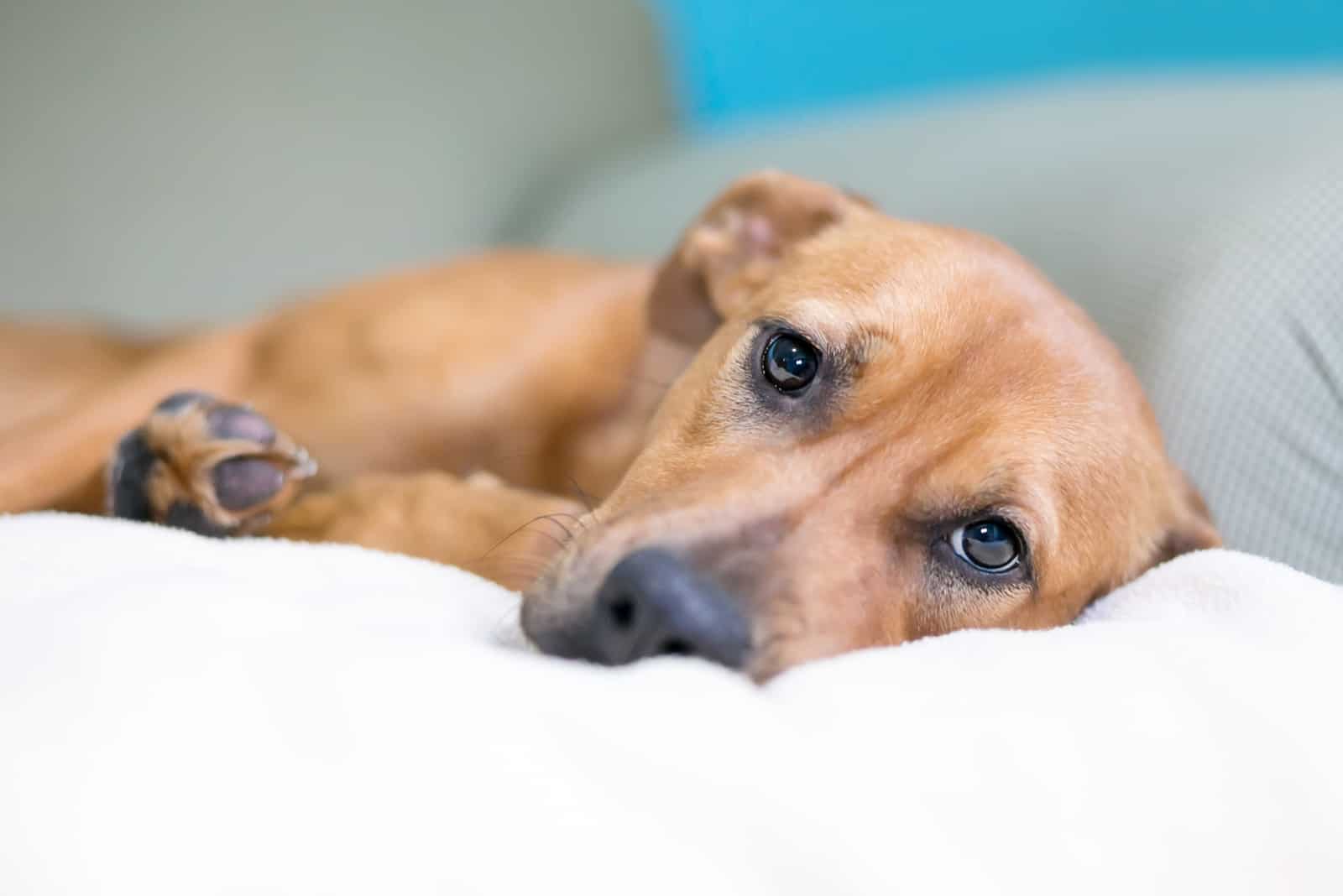
Also called hyperadrenocorticism, this is a condition where the dog’s body produces too much cortisol, the main stress hormone responsible for the fight or flight reflex (which shuts down non-essential body functions). This steroid hormone also maximizes the brain’s glucose use and helps to repair damaged tissue.
When the body produces too much over a long period of time, it can lead to an increase in health problems, including skin conditions that lead to hair loss.
Cushing’s disease is usually caused by a benign tumor on the adrenal or pituitary gland, but overuse of steroids to treat allergies or immune system disorders can contribute to the development of this condition as well.
The symptoms, mostly found in dogs over six years old, include increased urination and excessive thirst, an increase in appetite, panting, bloating, lack of energy, and obesity. This makes it tricky to diagnose, as there is no single test for the condition, and the symptoms mirror those of other illnesses.
Depending on the seriousness of the condition, it can be treated using medication, but it sometimes requires surgery.
Glaucoma
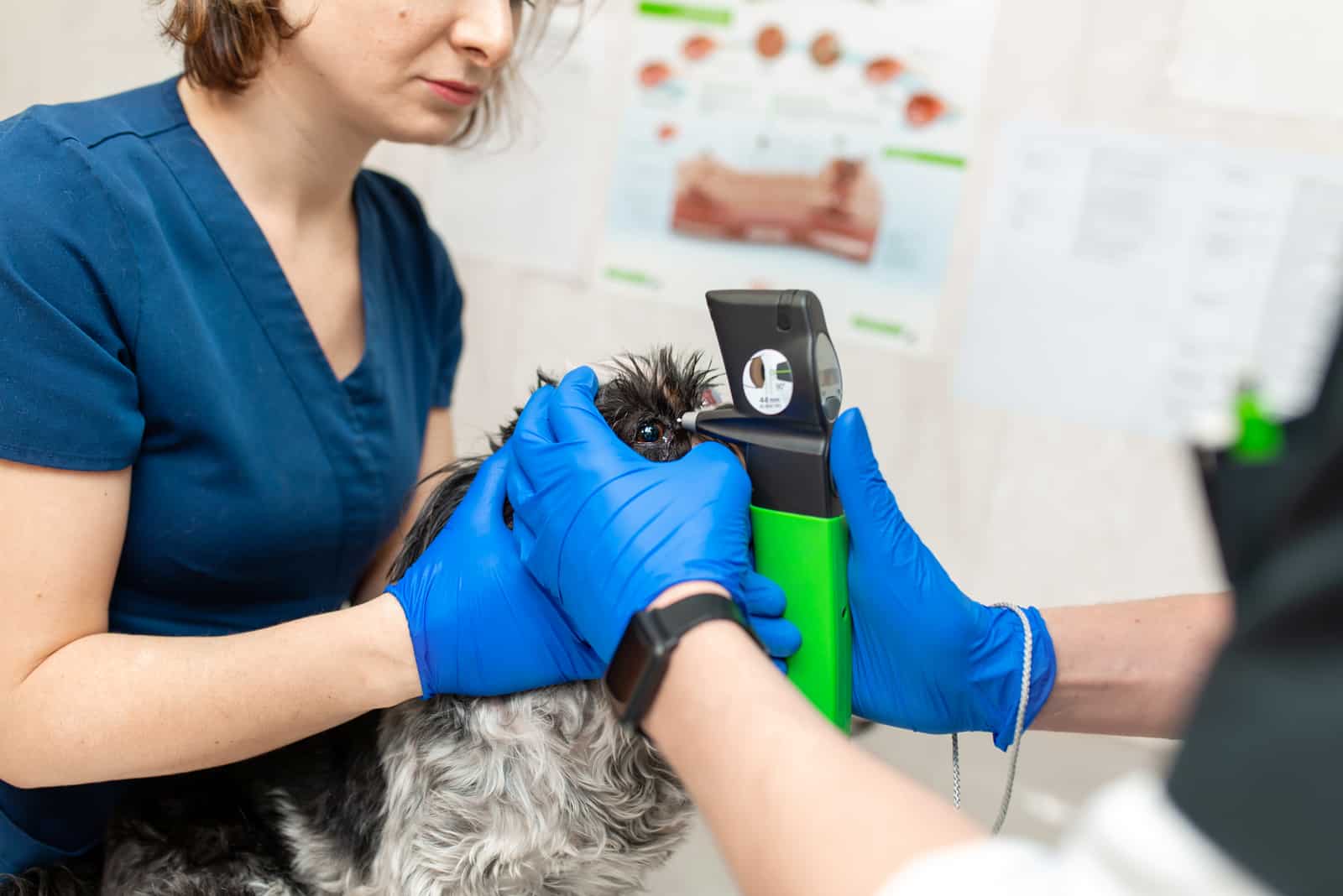
This condition is caused by a build-up of fluid in the eye that damages the retina and optic nerve due to the extra pressure. If not treated, it can result in blindness.
Symptoms include tears, redness of the eyes, rubbing and scratching, and hair loss around the eye area.
The usual causes include detached retina, tumors, infections, or it can be inherited in the genes. Sadly, in cases of inherited (primary) glaucoma, there is no cure. The condition is managed using medication.
Secondary glaucoma is treated with medication or surgery, depending on the cause. Early detection is essential to save your dog’s eyesight!
Conjunctivitis (pink eye) is another condition affecting the eyes and presents similar symptoms, so be sure to have your dog checked over by a vet to confirm what the problem is and allow them to suggest the right treatment.
Hypothyroidism
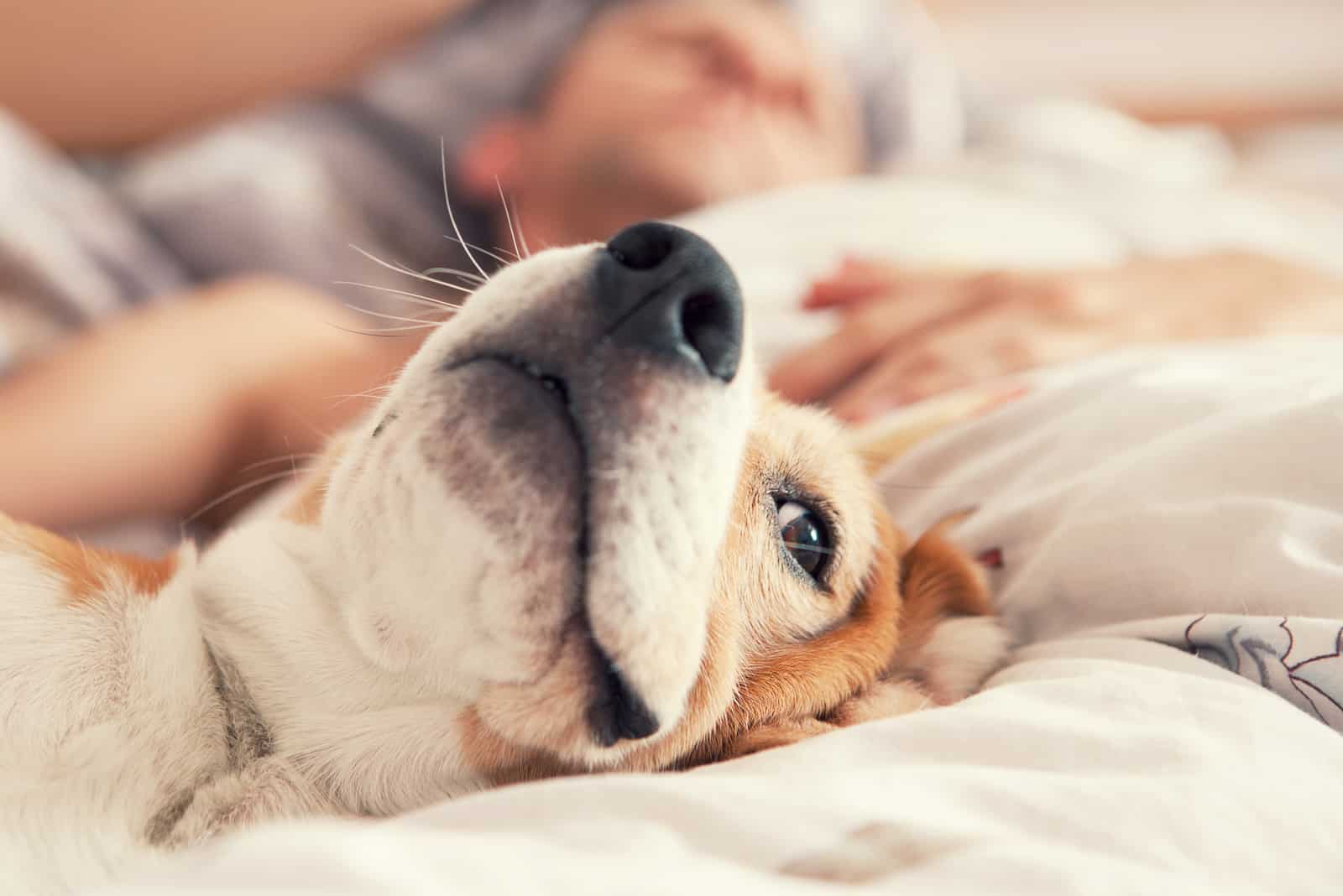
Thyroid problems can also affect a dog’s skin and coat. The coat may become dry and dull, with bald spots and changes in the skin pigmentation beneath. The hair loss will most likely be non-pruritic (no itchiness!), so you probably won’t notice your dog scratching.
This will by no means be the only symptom you see. Hypothyroidism usually makes the dog lethargic and lazy. They won’t want to play or exercise, resulting in rapid weight gain as the metabolism slows down. They will be sensitive to cold, always seeking out warm spots.
In the advanced stages, their heart will become abnormally slow (bradycardia), and they may suffer from a lack of coordination, nervous system problems, and a whole host of related issues.
This condition can be difficult to diagnose, but once it has been confirmed, treatment can begin. Most dogs will show signs of improvement within 4 to 6 weeks, but the skin and coat may take months to fully recover.
Hair Loss In Dogs – A Summary
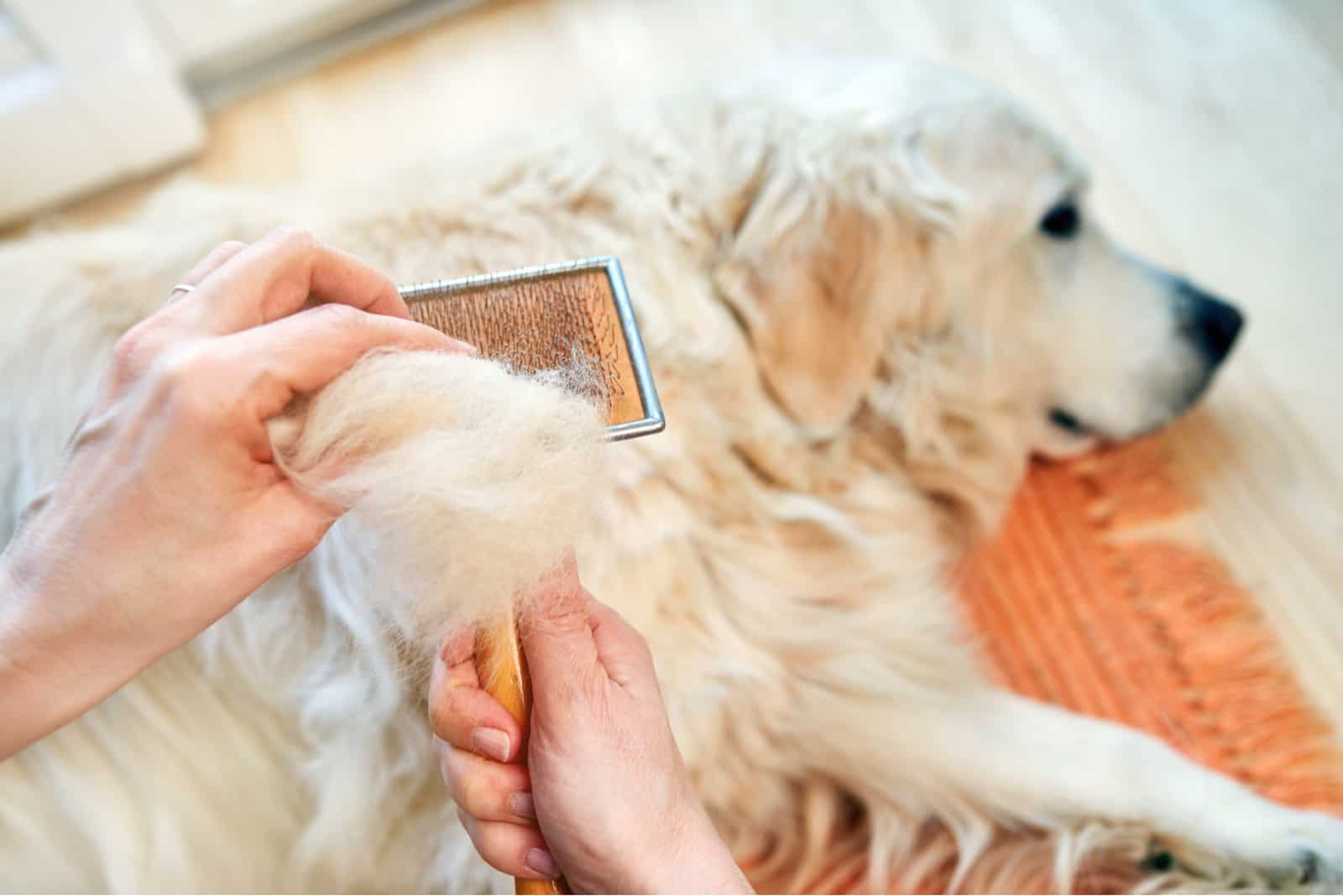
Unfortunately, some dog breeds are prone to hereditary alopecia. Breeds such as Chihuahua, Italian Greyhounds, and Daschunds are commonly affected.
There isn’t a definite course of treatment in these cases unless it is related to one of these ‘secondary’ causes listed above.
In other breeds not affected by hereditary alopecia, most bald spots will clear up with the right course of treatment. The trick is to get a quick diagnosis and start any treatment immediately!
We’ve covered the leading causes of alopecia, including those that specifically affect the area around the eyes. The most serious of these is probably glaucoma, as it can result in loss of sight.
There are a few steps you can take to avoid hair loss in your dog and to minimize the risk of serious illness:
• Always make fresh, clean water available — This keeps them hydrated, which promotes soft skin and a healthy coat.
• Feed them good quality dog food and keep treats to a minimum — Nutrition is vital in keeping the hair follicles healthy. Fatty or sugary foods can cause serious health issues in the long term.
• Bathe them regularly — Washing away contaminants and dirt will reduce the chances of infection.
• Establish food allergies and intolerance — Use trial and error to gradually eliminate foods that cause problems.
• Keep the environment clean! — Vacuum their bed/blanket regularly. Clean up any feces or urine in the yard or around places they tend to play or rest. This cuts down the risk of fungal and bacterial infections.
Finally, and not mentioned above, another cause of hair loss is anxiety. As far as possible, try to avoid situations that cause your dog to be stressed.
A happy dog is less likely to resort to obsessive behavior, chewing, or scratching at their fur!
Armed with this knowledge, you should now have a better understanding of why your dog is losing hair, especially around the eyes, and you’ll be better equipped to take action without stressing over it.
Well, you’ll probably still worry because that’s all part of having a fur-baby, isn’t it?
Read Next:
• Dog Eye Color Chart: 7 Mesmerizing Shades
• Stud Tail In Dogs: Why Does The Bald Spot Show Up?
• Horner’s Syndrome In Dogs – An Eyelid Issue Or A Serious Problem?
